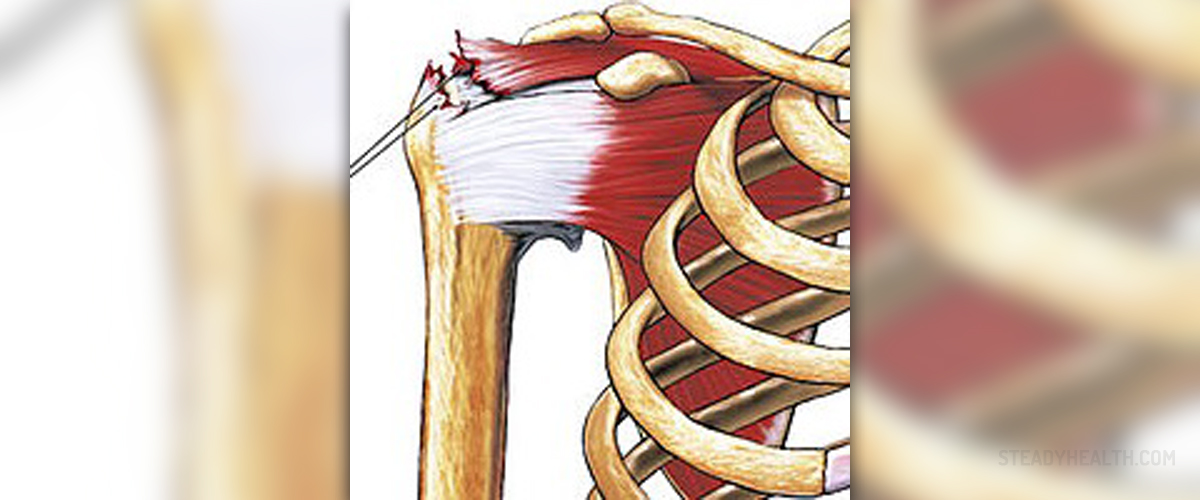
The shoulder joint comprises three bones, the upper arm bone, the shoulder blade and the collarbone as well as additional structures such as cartilage, tendons and ligaments all of which assist in stabilization of the joint and allow movement of the shoulder. Around the shoulder joint, to be more precise around its socket, there is the rotator cuff, a network of 4 muscles whose tendons cover the head of the upper arm bone and surround the joint. The rotator cuff additionally connects the upper arm bone with the shoulder blade. By doing so it allows us to lift and rotate our arms.
Now, as it is the case with any other muscle in the body, each of 4 rotator cuff muscles may succumb to injury and get torn. As a result muscle tendon is no longer completely attached to the upper arm bone. The affected tendon may be additionally damaged which eventually leads to complete tear. In the majority of cases tears occur in the supraspinatus muscle although other parts of the rotator cuff may be affected as well.
Rotator cuff tears are relatively common injury and a cause of pain /disability among healthy adult individuals. In 2008 around 2 million people in the US sought medical treatment due to rotator cuff health issues. The injury itself may severely weaken the shoulder and interfere with everyday activates, even the simplest ones such as combing hair and getting dressed.
Two Main Causes of Rotator Cuff Tears
Muscle tears in general are classified into partial and full-thickness tears. The former refers to tears that damage soft tissue, in this case the muscle, but do not severe it entirely while the latter (also known as complete tears) separate the affected soft tissue in two parts. In case of rotator cuff tears the damage is mostly localized to the site where tendons attach to the head of the upper arm bone.
Acute tear and degenerative tear are two main reasons behind rotator cuff tears. Acute tears are commonly associated with falls on the outstretched arm and may also occur if we lift heavy objects with a jerky motion. Additionally, such injury may result from other injuries to the shoulder area like fracture of the collar bone or shoulder dislocation.
Degenerative tears are the ones that develop as a consequence of previous damage to the tendon. Degeneration goes along with the process of aging. It is more present in the dominant arm but even the other arm is at risk of injury.
Certain factors significantly contribute to this type of injury. Namely, rotator cuff tears are frequent if there is repetitive stress, lack of blood supply to the area and if the shoulder is affected by bone spurs. Repetitive motions in the shoulder may stress muscles and tendons and eventually trigger tears. This is seen among people engaged in certain sports such as baseball, tennis and weightlifting. Even routine chores and certain jobs may be blamed for such stress. Lack of blood supply is something that comes with age. In case there is minor damage to the rotator cuff and the area is not well-supplied with blood, the damage cannot be repaired completely and the shoulder becomes more susceptible to even greater damage. And finally, if there are bone spurs on some bones of the shoulder joint, they may rub on the rotator cuff tendon, trigger irritation and eventually cause tears.Rotator Cuff Tears Risk Factors
Normal wear and tear are blamed for the majority of cases of rotator cuff tears. This explains why most patients are actually older than 40 years. So, practically people over 40 years of age are at higher risk of this type of injury.
As it has already been mentioned repetitive stress due to certain sports and even some jobs may trigger rotator cuff tears. This drives to conclusion that professional athletes practicing certain sports as well as individuals involved in jobs related to excessive/repetitive lifting or overhead activities represent another group at risk of injury.
Finally, the risk is also present among young people, those who experience traumatic injury such as accidental falls.Surgical Treatment Options
When it comes to rotator cuff tears surgery is only indicated when there is a need to re-attach the tendon to the head of the upper arm bone because it has completely separated and when there is a complete tear within the thickest part of the tendon. Also, sometimes doctor opt for surgery when pain associated with the injury simply do not respond to conservative treatment. Professional athletes may require surgical repair especially if the tear might interfere with their future performance.
Repair of this type is either open or all-arthroscopic repair. Mini-open repair is another alternative. In case of open repair surgical incision is large allowing the surgeon to manipulate inside the shoulder joint. During this surgery it is also possible to remove bone spurs, if there are any. All-arthroscopic repair is less invasive approach. Incisions are smaller and surgery performed with assistance of an arthrocope (a tiny camera inserted into the shoulder joint) and miniature surgical instruments inserted through several more small cuts. Finally, mini-open repair is quite a modern approach. The surgeon also reaches the injured site through a small incision. The structures of the joint are first visualized and inspected with an arthroscope while surgery takes place under the naked eye of the surgeon not through the video monitor.


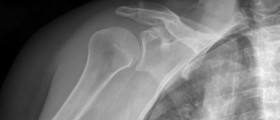
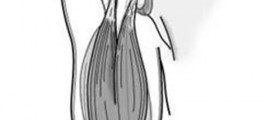
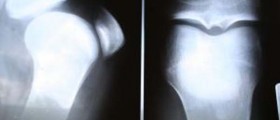
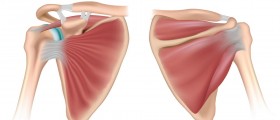
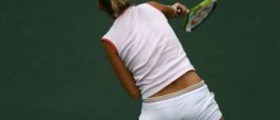
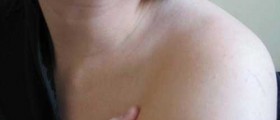
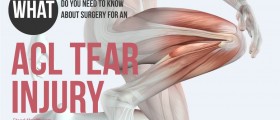
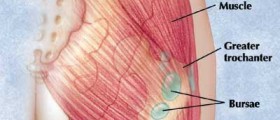
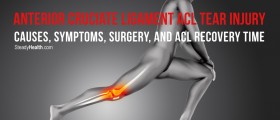

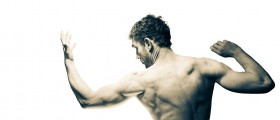
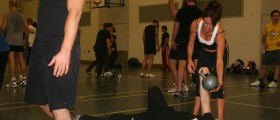
-Causes,-Symptoms,-Diagnosis,-Treatment_f_280x120.jpg)
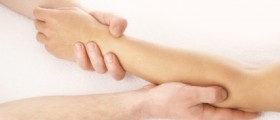
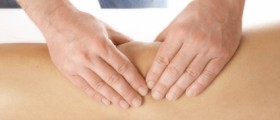
Your thoughts on this
Loading...